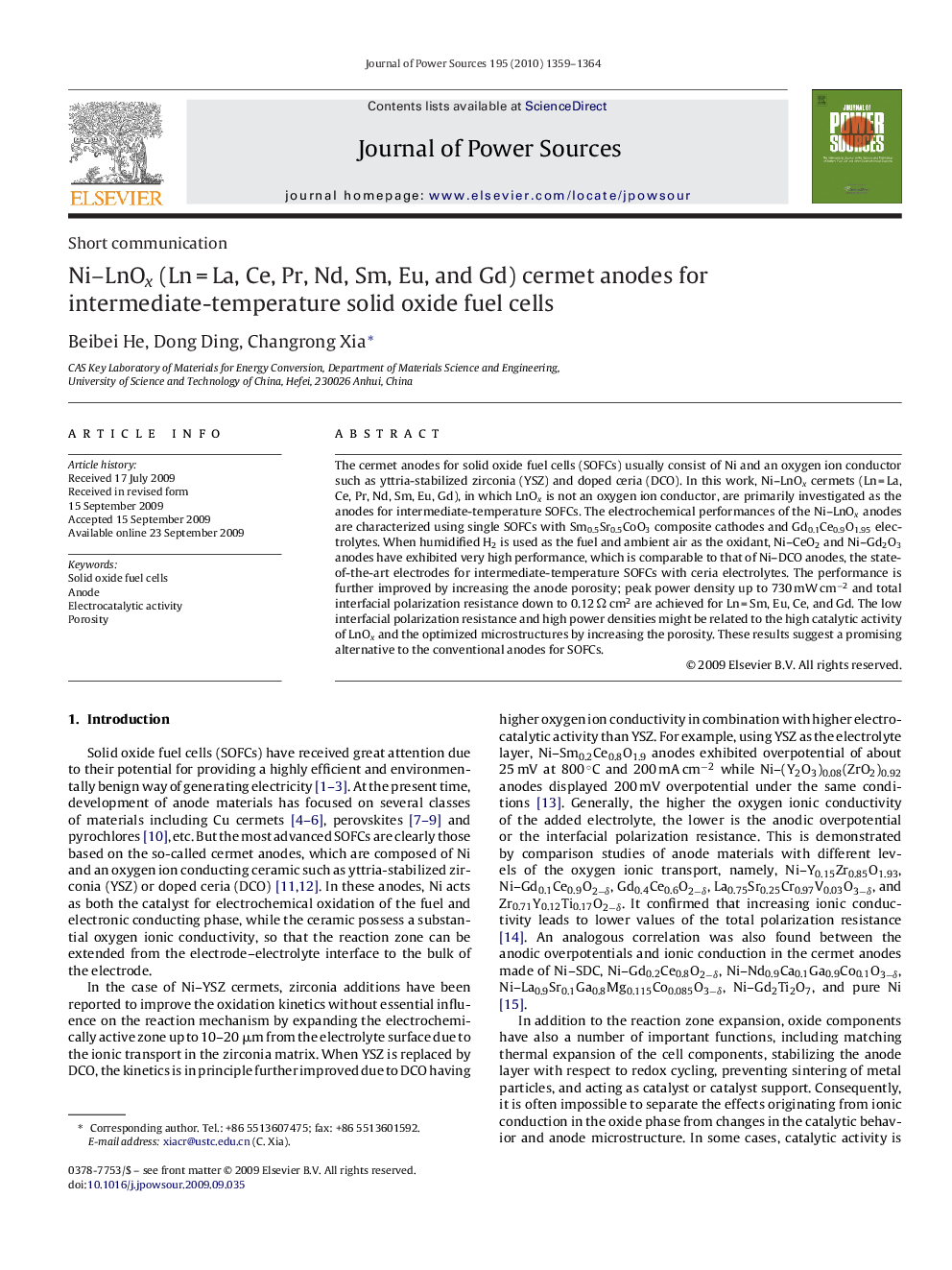| Article ID | Journal | Published Year | Pages | File Type |
|---|---|---|---|---|
| 1293813 | Journal of Power Sources | 2010 | 6 Pages |
The cermet anodes for solid oxide fuel cells (SOFCs) usually consist of Ni and an oxygen ion conductor such as yttria-stabilized zirconia (YSZ) and doped ceria (DCO). In this work, Ni–LnOx cermets (Ln = La, Ce, Pr, Nd, Sm, Eu, Gd), in which LnOx is not an oxygen ion conductor, are primarily investigated as the anodes for intermediate-temperature SOFCs. The electrochemical performances of the Ni–LnOx anodes are characterized using single SOFCs with Sm0.5Sr0.5CoO3 composite cathodes and Gd0.1Ce0.9O1.95 electrolytes. When humidified H2 is used as the fuel and ambient air as the oxidant, Ni–CeO2 and Ni–Gd2O3 anodes have exhibited very high performance, which is comparable to that of Ni–DCO anodes, the state-of-the-art electrodes for intermediate-temperature SOFCs with ceria electrolytes. The performance is further improved by increasing the anode porosity; peak power density up to 730 mW cm−2 and total interfacial polarization resistance down to 0.12 Ω cm2 are achieved for Ln = Sm, Eu, Ce, and Gd. The low interfacial polarization resistance and high power densities might be related to the high catalytic activity of LnOx and the optimized microstructures by increasing the porosity. These results suggest a promising alternative to the conventional anodes for SOFCs.
